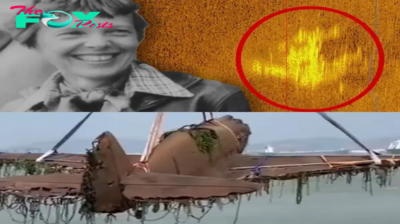Weird Animals
b83.The Victoria Crowned Pigeon: Witness The Splendor of This Majestic Bird, as Resplendent as Its Majesty in Turkey
The Victoria crowned pigeon (Goura victoria) is a large, bluish-grey pigeon with elegant blue lace-like crests, maroon breast and red irises. It is part of a genus (Goura) of four unique, very large, ground-dwelling pigeons native to the New Guinea region. The bird may be easily recognized by the unique white tips on its crests and by its deep ‘whooping’ sounds made while calling.Its name commemorates the British monarch Queen Victoria.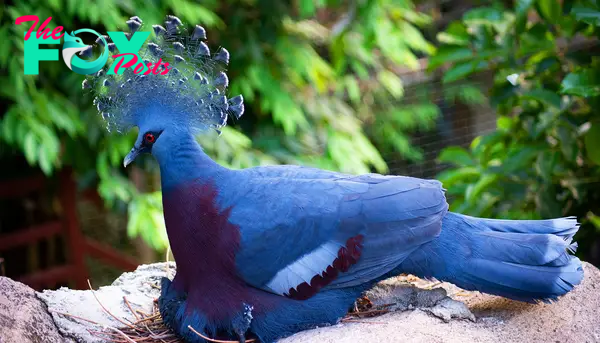
Description: The Victoria crowned pigeon is a deep blue-grey colour with a small, black mask. Its feather crest (the signature feature of crowned pigeons other than their size) is conspicuously white-tipped. On the wing coverts is a row of feathers that are a paler blue-gray with maroon tips. These form a distinct wing bar. The chest is a deep purple-maroon color. As in all crowned pigeons, melanism has been observed. The other two crowned pigeons are somewhat superficially similar, but only the western crowned pigeon overlaps in range with the Victoria species. The Scheepmaker’s crowned pigeon does not. In the western species, the crown is more scraggly and hair-like, the chest is a uniform blue-gray and not maroon, and a less distinct wing-bar is present. Both sexes are similar.
This species is typically 73 to 75 cm (29 to 30 in) long. Some specimens may exceed a length of 80 cm (31 in) and a weight of 3.5 kg (7.7 lb).It is marginally larger than the two other crowned pigeons on average, at a mean of 2.39 kg (5.3 lb) in adult body mass, thus is considered the largest surviving species of pigeon of Earth. The standard measurements among pigeons on mainland New Guinea are: the wing chord is 36–39 cm (14–15 in), the tail is 27–30.1 cm (10.6–11.9 in), the bill is 3.2–3.5 cm (1.3–1.4 in) and the unfeathered tarsus is 8.5–9.8 cm (3.3–3.9 in).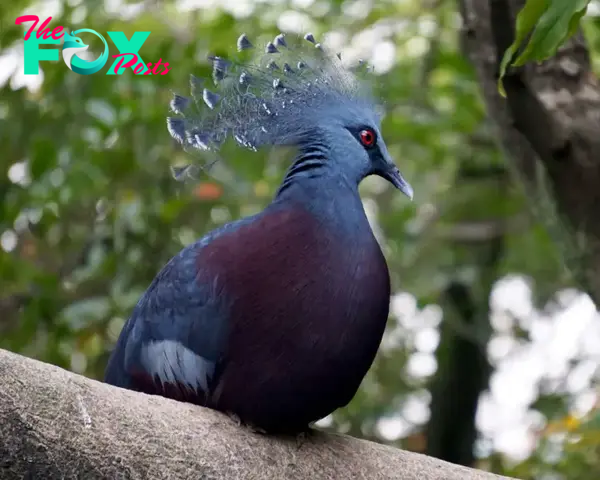
Habitat: The Victoria crowned pigeon is distributed in the lowland and swamp forests of northern New Guinea and surrounding islands. It usually occurs on areas that were former alluvial plains, including sago forests. Though typically found at or near sea level, occasionally birds of this species may venture up in the hills to an elevation up to about 3,000 feet.
Behavior: Like other crowned pigeons, the Victoria crowned pigeon is a gregarious species. They usually Travel in pairs or small parties as they search for food. They walk with an unhurried gait along the forest floor. Their food typically consists of fallen fruit. Birds of this species in captivity are particularly fond of eating figs. Seeds and invertebrates may occasionally supplement the diet. When disturbed, these birds fly straight up into the canopy or a large horizontal branch of a large forest tree. After being disturbed, they may remain on their perch for a considerable time engaging in contact calls and flicking their tails. In the wild, this species tends to be shier than the western crowned pigeon, but can still occasionally be quietly approached.The males regularly engage in aggressive displays to establish dominance. In these interactions, the pigeons puff up their chests and repeatedly raise their wings as if preparing to strike their opponent. They also make short dashes at each other and may actually hit one another, but rarely make contact and can be completely peaceful towards other males outside of the early mating season.
Status: The Victoria crowned pigeon is now the most rarely occurring of the three crowned pigeon species in the wild, although it is the most widely kept species in captivity. Perhaps the most pressing threat to the species is continuing habitat loss due to logging. It’s now quite uncommon near human habitations because it is heavily hunted around them, particularly in areas where gun possession is prevalent. It can be quite tame and easily shot, though it now seems to be fearful of humans in the wild. Most hunting is for its plumes and meat. Trapping of pigeons to be kept alive for captive collections is now illegal but is still likely to be occurring. The Victoria crowned pigeon is evaluated as Near Threatened on the IUCN Red List of Threatened Species.It is listed in Appendix II of CITES.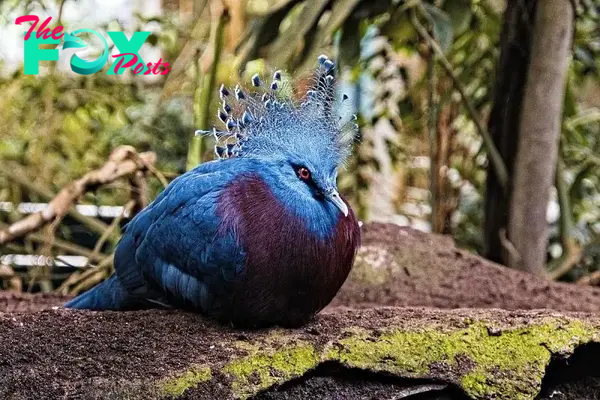
-
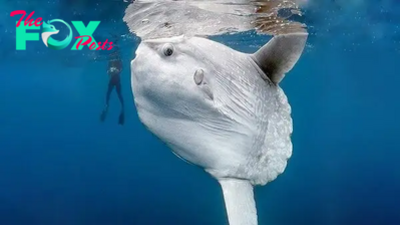
 Weird Animals4m ago
Weird Animals4m ago.Deep Sea Wonder: 22ft Circular White Fish Charms Diver, Becomes Social Media Sensation..D
-
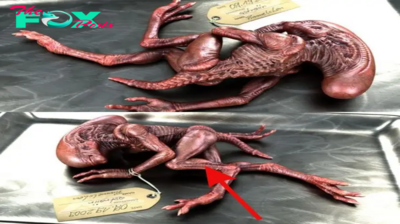
 Weird Animals4m ago
Weird Animals4m agonht.The astonishing discovery of an alien mummy, perfectly preserved as if alive, shocked everyone.
-

 Weird Animals4m ago
Weird Animals4m agonht.Discover the chilling tale of the 1818 UFO crash and the lost portal to another planet.
-
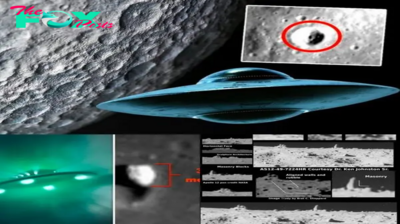
 Weird Animals4m ago
Weird Animals4m agonht.Uncovering Lunar Mysteries: Ex-NASA Insiders Claim Extraterrestrial Presence in Lunar Structures
-
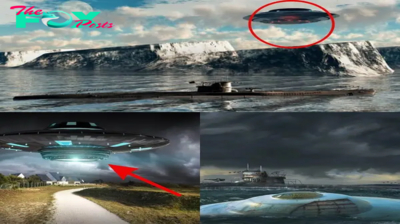
 Weird Animals4m ago
Weird Animals4m agonht.Today’s breaking news: a mysterious floating city-like UFO discovered in Dulali village has caused widespread panic.
-

 Weird Animals4m ago
Weird Animals4m ago.The Astonishing and Terrifying Experience of Coming Face to Face with a 4-Meter Octopus!..D
-
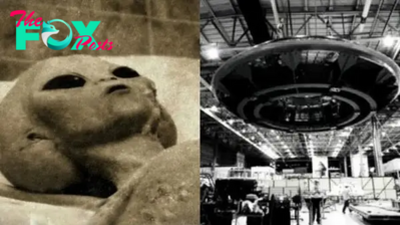
 Weird Animals4m ago
Weird Animals4m agonht.Breaking News: Documentaries Uncover UFO Crashes in the Desert
-

 Weird Animals4m ago
Weird Animals4m agonht.Breaking news: Utah woman claims to have raised abducted aliens since 1923, shocking everyone.
